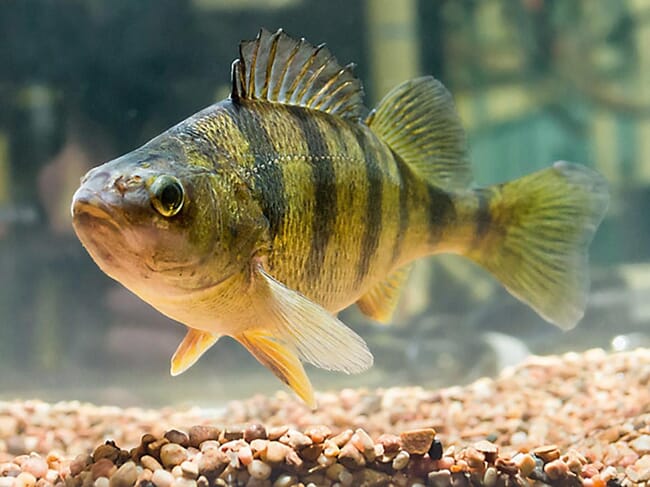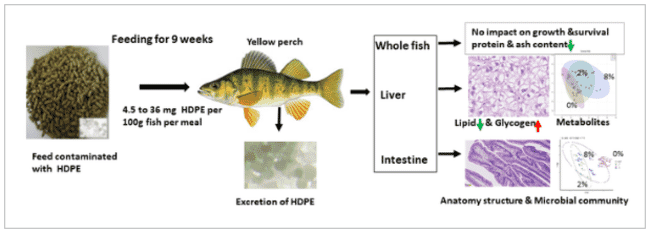
© USDA
The study, led by Professor Dong-Fang Deng’s lab at the US’ University of Wisconsin-Milwaukee, explored how the consumption of feed contaminated with high-density polyethylene (HDPE) impacted yellow perch. She and her team found that while the fish can expel the microplastics from their guts, the effort results in reduced nutritional value of the fish, altered liver function and a change in the microbiota communities harboured in their guts.
When plastic enters our oceans, lakes and streams, it can break down into microplastics - plastic particles smaller than 5 mm in one dimension. Despite growing public concern over the impact of microplastics on our environment, we still know very little about the way they affect farmed fish; even though our reliance on aquaculture fish as a food source is increasing.
Professor Deng explains, “we chose yellow perch because they are a favourite fish (when available) of people living in the Great Lakes region in the US and the reduced supply of wild fish has driven commercial yellow perch aquaculture. We focused on HDPE as it is widely used to make products ranging from grocery bags and cleaning products to toys and detergent bottles. As a result, it is one of the common plastics found in wild-caught fish, and it is also detected in fishmeal, a major ingredient in fish feed.”
During the nine-week study, the yellow perch were fed three meals daily. Each meal contained 4.5mg to 36mg of HDPE per 100g fish. The particle size of the HDPE ranged from 100 to 125 micrometres (μm), which is a common size for ingredients used in aquatic feeds.
Professor Deng says, “what we found is that the yellow perch not only survived the nine-week exposure, they also expelled all the microplastics from their bodies. However, the nutritional quality of the fish was reduced – we saw lower body protein and mineral (ash) levels than in fish fed the control diet with no HDPE added. We also discovered that exposure to HDPE altered their liver function – they had a heavier liver enriched with glycogen (sugar) and bile acids, but lower lipid (fat) levels and enlarged hepatocytes, the cells involved in metabolism, detoxification and nutrient synthesis. We also saw some disturbance in the gut structure and microbiota community associated with immunity, nutrient digestion and absorption.”

© Chronic exposure to high-density polyethylene (HDPE) alters the nutrient metabolism of juvenile yellow perch
Professor Deng adds, “…this study was limited to yellow perch fed HDPE with a size of 100-125 μm. It’s possible that plastics at different levels and with a different size, form and shape could alter the results. In addition, there are more than 300 finfish farmed by the aquaculture industry globally. Feeding habits vary depending on whether they are carnivores, herbivores, omnivores or limnivores, etc, and that might influence how they handle plastic-contaminated feed; for example, herbivores have longer guts and may need longer to empty them. More research is needed to solve this puzzle.”




